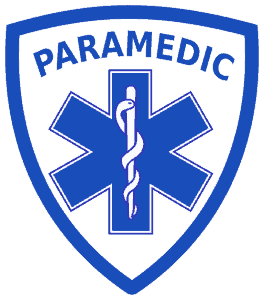
Dan Limmer, BS, NRP

by Dan Limmer, BS, NRP
Our articles are read by an automated voice. We offer the option to listen to our articles as soon as they are published to enhance accessibility. Issues? Please let us know using the contact form.
At the New York State Vital Signs Conference I presented a session on successfully transitioning students from BLS to ALS. When I present to educators, I like to have a session with a lot of participation, so I limited my visuals to questions which I posed to the group.
Questions ranged from the need for clinical experience before entering paramedic class, the value of intrinsic motivation, prerequisites and more. The question that garnered the most interesting responses was, “What are the most valuable things we can teach EMT students to assure success in paramedic class?”

75% of the answers involved affective concepts like “compassion” and “heart.” Even when I prompted participants to think on the clinical side, they came back to the affective. This is interesting because the word “compassion” is used just once in the instructional guidelines that accompany the EMT Education Standards. “Empathy” is used only twice.
When time is short and clinical skills are required for passing, compassion practice can suffer, so we’ve prepared a few ways to work compassion into your classroom. Our Dynamic Learning Exercises on patient refusal and death notification combine clinical education with the practice of compassion.
Patient refusal – This dynamic exercise asks students to identify three reasons a person might refuse care from EMS and then make a video where they roleplay an EMT convincing the patient to accept care. Different styles and levels of compassion can be seen on the videos students submit. Plus it is a great way to learn refusal deeply—not superficially.
Death notification – a two-part exercise where students work together on concepts of death notification in groups. The exercise provides roleplay scenarios to use in the classroom or lab setting where students can actually perform death notifications in a simulated environment.
On the clinical side, what did educators believe was most important for EMTs transitioning into advanced classes?
Pathophysiology is a clinical cornerstone of education in all levels of EMS education. In EMT classes, educators (especially those who have experience in the EMT-B curriculum) struggle to find relevance and appropriate depth when teaching pathophysiology.
While the pathophysiology taught at the EMT level only involves respiration, ventilation, and perfusion, these topics apply in almost every lesson presented in EMT class from airway to assessment to allergic reaction to opiate overdose to shock. The ability to recognize cool, moist skin is easy. Understanding WHY it is cool and moist is where our students lack.
As a response to the challenges posed by pathophysiology—and the need for patho in our graduating EMTs that go on to AEMT and paramedic—Limmer Education created an ALS prep bundle with core products designed to help students transition from EMT to advanced level courses. Done either as pre-course work, or in the early weeks of class, pathophysiology, assessment, and medical terminology knowledge helps prepare students for success in advanced classes - without having to reteach the entire EMT class before you begin.
Among the most challenging to teach—and looked at as most important by educators. How do you teach these topics in your EMT class? How important do you believe these are when students begin an advanced class?
We’d love to know what you think.

Dan Limmer, BS, NRP

Limmer Education

Dan Limmer, BS, NRP